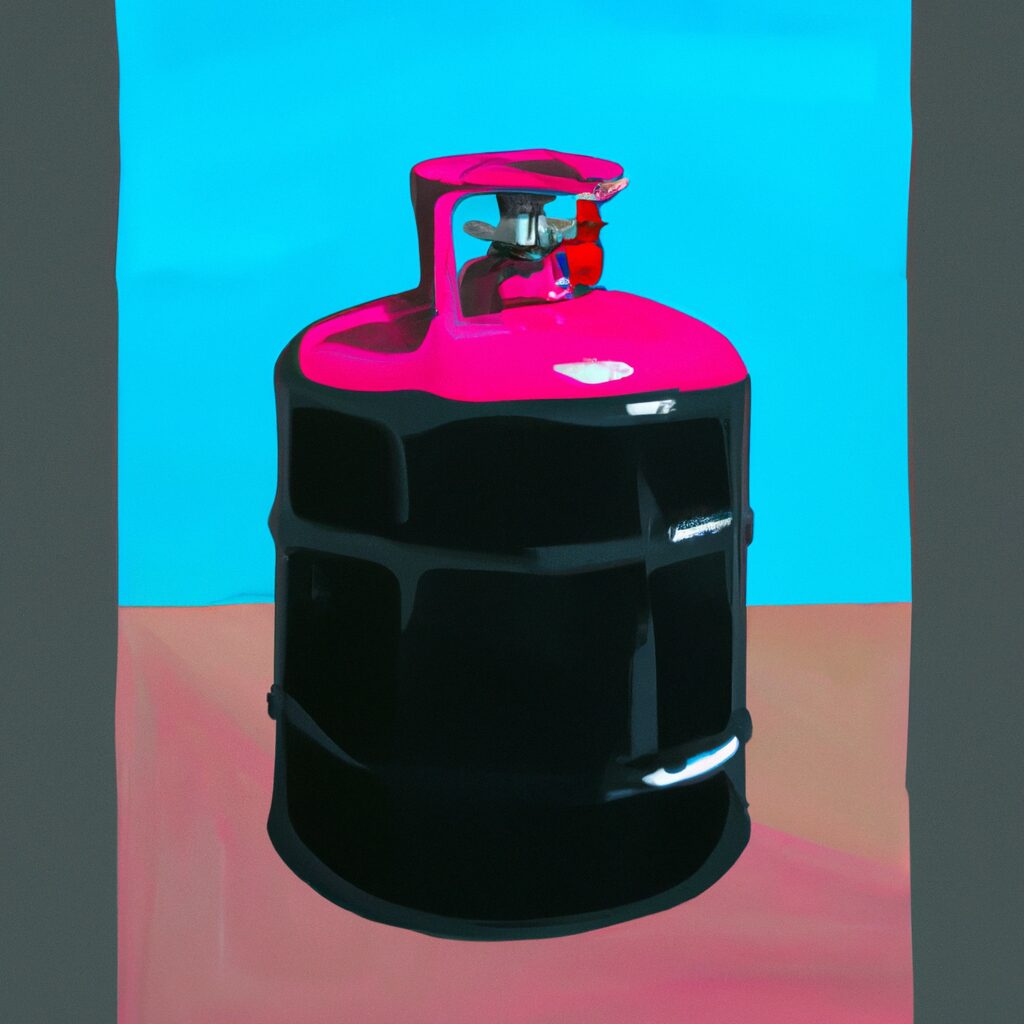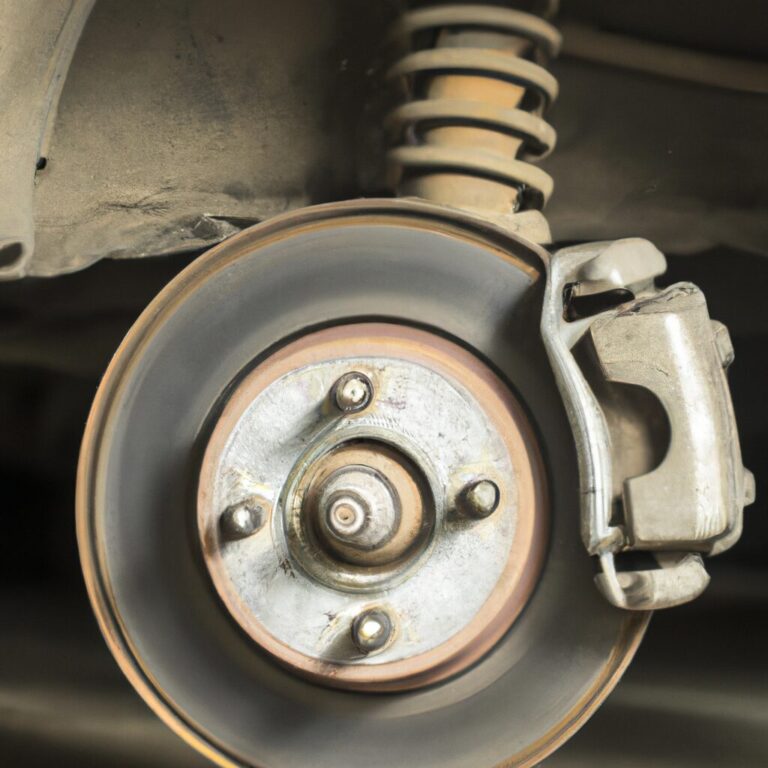lacquer thinner in gas tank
Introduction
Lacquer thinner is a type of solvent used to thin and remove lacquer-based paints and coatings. It is also used to clean and degrease surfaces prior to painting. While lacquer thinner is a useful product for many tasks, it should never be put in a gas tank. Doing so can cause serious damage to the engine and other components of the vehicle. In this article, we will discuss why it is important to never put lacquer thinner in a gas tank.
What Are the Dangers of Putting Lacquer Thinner in a Gas Tank?
The use of lacquer thinner in a gas tank is extremely dangerous and should be avoided at all costs. Lacquer thinner is a highly flammable and volatile solvent that is used to thin lacquer-based paints and varnishes. It is not designed to be used as a fuel additive and can cause serious damage to a vehicle’s engine.
When lacquer thinner is added to a gas tank, it can cause the fuel to ignite prematurely, leading to a phenomenon known as “knocking” or “pinging.” This can cause severe damage to the engine, including piston and cylinder damage, as well as damage to the fuel system. In addition, the lacquer thinner can also corrode the fuel lines and other components of the fuel system, leading to further damage.
The use of lacquer thinner in a gas tank can also lead to a dangerous build-up of vapors in the tank. These vapors can be ignited by a spark, leading to an explosion. This can cause serious injury or even death.
In summary, the use of lacquer thinner in a gas tank is extremely dangerous and should be avoided at all costs. It can cause severe damage to the engine, fuel system, and other components, as well as create a dangerous build-up of vapors that can be ignited by a spark.
How to Safely Dispose of Lacquer Thinner After Use
Lacquer thinner is a hazardous material that should be handled with care and disposed of properly. It is important to take the necessary precautions to ensure that lacquer thinner is disposed of safely and in accordance with local regulations.
When disposing of lacquer thinner, it is important to wear protective clothing such as gloves, goggles, and a respirator. It is also important to work in a well-ventilated area.
The first step in disposing of lacquer thinner is to collect it in a sealed, non-leaking container. The container should be labeled with the words “Hazardous Waste” and the date of disposal. It is important to ensure that the container is tightly sealed to prevent any leakage.
Once the lacquer thinner has been collected, it should be taken to a hazardous waste disposal facility. It is important to check with local regulations to ensure that the facility is properly licensed and equipped to handle hazardous materials.
It is also important to ensure that the lacquer thinner is disposed of in accordance with local regulations. This may include diluting the lacquer thinner with water before disposal or mixing it with other hazardous materials.
Finally, it is important to keep records of the disposal of the lacquer thinner. This will help to ensure that the material is disposed of properly and in accordance with local regulations.
By following these steps, it is possible to safely dispose of lacquer thinner after use. It is important to take the necessary precautions to ensure that the material is handled and disposed of properly.
What Are the Symptoms of Lacquer Thinner Contamination in a Gas Tank?
The symptoms of lacquer thinner contamination in a gas tank can be serious and should not be ignored. Symptoms of contamination include a strong odor of lacquer thinner in the exhaust, a decrease in engine performance, and a decrease in fuel efficiency. Additionally, the engine may run rough or stall, and the spark plugs may become fouled.
If the contamination is severe, the fuel filter may become clogged, resulting in a decrease in fuel pressure. This can cause the engine to run erratically or even stall. In some cases, the fuel pump may become damaged due to the lacquer thinner.
If you suspect that your gas tank has been contaminated with lacquer thinner, it is important to have it inspected and serviced immediately. A qualified mechanic can inspect the fuel system and determine the extent of the contamination. If necessary, the fuel tank should be drained and cleaned to remove any remaining lacquer thinner. The fuel filter should also be replaced to ensure that the fuel system is free of contaminants.
How to Clean a Gas Tank After a Lacquer Thinner Spill
If you have spilled lacquer thinner in your gas tank, it is important to clean it up as soon as possible. Lacquer thinner is a highly flammable solvent that can cause serious damage to your vehicle if left unchecked. Here are the steps you should take to clean up a lacquer thinner spill in your gas tank:
1. Drain the tank. The first step is to drain the tank of any remaining fuel. This can be done by siphoning the fuel out or by using a fuel pump.
2. Clean the tank. Once the tank is empty, you should clean it thoroughly with a degreaser or a mild detergent. Make sure to scrub the inside of the tank to remove any residue from the lacquer thinner.
3. Rinse the tank. After cleaning the tank, you should rinse it with water to remove any remaining residue.
4. Dry the tank. Once the tank is clean and rinsed, you should dry it with a clean cloth or paper towels.
5. Refill the tank. Once the tank is dry, you can refill it with fresh fuel.
Following these steps will help ensure that your gas tank is clean and safe after a lacquer thinner spill. It is important to take the necessary precautions to avoid any further damage to your vehicle.
What Are the Alternatives to Using Lacquer Thinner in a Gas Tank?
When it comes to adding a fuel additive to a gas tank, lacquer thinner is not the only option. There are several alternatives that can be used to improve the performance of a vehicle’s engine.
One alternative is to use a fuel injector cleaner. This type of cleaner is designed to remove deposits from the fuel injectors, which can help improve fuel economy and reduce emissions. It can also help reduce engine noise and vibration.
Another option is to use a fuel stabilizer. This type of additive helps to keep fuel fresh and prevents it from breaking down over time. It can also help to reduce the amount of carbon buildup in the engine, which can lead to improved performance.
Finally, a fuel system cleaner can be used to help clean the fuel system and remove any deposits that may be present. This type of cleaner can help to improve fuel economy and reduce emissions.
In conclusion, there are several alternatives to using lacquer thinner in a gas tank. These alternatives can help to improve the performance of a vehicle’s engine and reduce emissions. It is important to research the different types of fuel additives available and choose the one that best suits the needs of the vehicle.
How to Prevent Lacquer Thinner from Entering a Gas Tank
It is important to take precautions to prevent lacquer thinner from entering a gas tank. Lacquer thinner is a hazardous chemical that can cause serious damage to a vehicle’s engine if it is ingested. To prevent lacquer thinner from entering a gas tank, it is important to take the following steps:
1. Always store lacquer thinner in a secure, sealed container. This will help to prevent any accidental spills or leaks.
2. When transferring lacquer thinner from one container to another, use a funnel to ensure that none of the liquid enters the gas tank.
3. When filling a gas tank, make sure that the nozzle is securely attached to the tank and that the tank is completely sealed.
4. If you are using a gas can to transport fuel, make sure that it is clearly labeled as containing fuel and not lacquer thinner.
5. If you are using a gas can to transport lacquer thinner, make sure that it is clearly labeled as containing lacquer thinner and not fuel.
By following these steps, you can help to ensure that lacquer thinner does not enter your vehicle’s gas tank. Doing so will help to protect your vehicle’s engine and ensure that it runs smoothly.
What Are the Long-Term Effects of Lacquer Thinner in a Gas Tank?
The long-term effects of lacquer thinner in a gas tank can be severe and potentially dangerous. Lacquer thinner is a highly flammable and volatile solvent that is used to thin lacquer-based paints and varnishes. It is not intended for use in a gas tank and can cause serious damage to the fuel system and engine of a vehicle.
When lacquer thinner is added to a gas tank, it can cause the fuel to become contaminated. This can lead to a decrease in fuel efficiency, as well as a decrease in engine performance. The fuel system can become clogged with lacquer thinner, which can cause the engine to run rough and stall. In addition, the fuel pump and fuel injectors can become damaged, leading to costly repairs.
The long-term effects of lacquer thinner in a gas tank can also include corrosion of the fuel tank and fuel lines. The lacquer thinner can react with the metal components of the fuel system, leading to rust and corrosion. This can cause leaks in the fuel system, which can be dangerous and lead to a fire.
Finally, the long-term effects of lacquer thinner in a gas tank can include damage to the catalytic converter. The lacquer thinner can cause the catalytic converter to become clogged, leading to a decrease in engine performance and an increase in emissions.
In conclusion, the long-term effects of lacquer thinner in a gas tank can be severe and potentially dangerous. It is important to never add lacquer thinner to a gas tank, as it can cause damage to the fuel system, engine, and catalytic converter.
How to Diagnose and Repair Damage Caused by Lacquer Thinner in a Gas Tank
Lacquer thinner is a powerful solvent that can cause serious damage to a gas tank if it is not handled properly. If you suspect that lacquer thinner has been spilled in your gas tank, it is important to take the necessary steps to diagnose and repair the damage as soon as possible. This article will provide an overview of the steps you should take to diagnose and repair damage caused by lacquer thinner in a gas tank.
The first step is to diagnose the extent of the damage. To do this, you will need to remove the gas tank from the vehicle and inspect it for signs of corrosion or other damage. If you notice any signs of corrosion, you should take the tank to a professional for further inspection. The professional will be able to determine the extent of the damage and advise you on the best course of action.
Once the extent of the damage has been determined, you can begin the repair process. If the damage is minor, you may be able to repair it yourself. Start by cleaning the tank with a degreaser and a soft cloth. Once the tank is clean, you can apply a rust converter to any areas that are showing signs of corrosion. This will help to prevent further corrosion and will also help to seal any small holes or cracks that may have been caused by the lacquer thinner.
If the damage is more extensive, you may need to replace the tank. Before doing so, you should make sure to dispose of the old tank properly. You should also take the time to inspect the new tank for any signs of damage before installing it.
Once the tank is installed, you should fill it with fresh gasoline and check for any leaks. If you notice any leaks, you should take the tank back to the professional for further inspection.
By following these steps, you can diagnose and repair damage caused by lacquer thinner in a gas tank. It is important to take the necessary steps to ensure that the damage is properly repaired and that the tank is safe to use.
Q&A
1. Is it safe to put lacquer thinner in a gas tank?
No, it is not safe to put lacquer thinner in a gas tank. Lacquer thinner is a highly flammable solvent and can cause a fire or explosion if it comes into contact with a spark or flame.
2. What are the risks of putting lacquer thinner in a gas tank?
The risks of putting lacquer thinner in a gas tank include fire or explosion, damage to the fuel system, and potential health risks from inhaling the fumes.
3. What should I do if I accidentally put lacquer thinner in my gas tank?
If you accidentally put lacquer thinner in your gas tank, you should immediately drain the tank and have it professionally cleaned. You should also have the fuel system inspected for any damage.
4. Can lacquer thinner damage my car’s engine?
Yes, lacquer thinner can damage your car’s engine if it is not removed from the fuel system. The solvent can corrode and damage the fuel lines, fuel injectors, and other components of the fuel system.
5. Is it safe to drive my car if I accidentally put lacquer thinner in the gas tank?
No, it is not safe to drive your car if you have accidentally put lacquer thinner in the gas tank. The solvent can cause a fire or explosion if it comes into contact with a spark or flame.
6. What should I do if I smell lacquer thinner in my car?
If you smell lacquer thinner in your car, you should immediately stop the car and have it inspected by a professional. The solvent can be dangerous and should be removed from the fuel system as soon as possible.
7. Can lacquer thinner cause health problems?
Yes, lacquer thinner can cause health problems if it is inhaled or comes into contact with the skin. The fumes can irritate the eyes, nose, and throat, and can cause headaches, dizziness, and nausea.
8. Is it safe to use lacquer thinner to clean my car?
No, it is not safe to use lacquer thinner to clean your car. The solvent is highly flammable and can cause a fire or explosion if it comes into contact with a spark or flame.
Conclusion
In conclusion, it is not recommended to put lacquer thinner in a gas tank. Lacquer thinner is a highly flammable and toxic chemical that can cause serious damage to the engine and other components of the vehicle. Additionally, it can cause corrosion and other damage to the fuel system, leading to costly repairs. Therefore, it is best to avoid using lacquer thinner in a gas tank.



